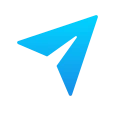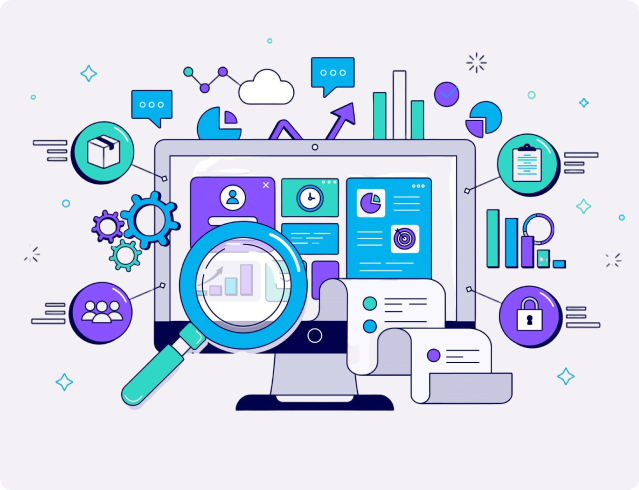The need for seamless, powerful, and flexible Business Intelligence (BI) platforms has never been more crucial for organizations looking to stay ahead in today’s data-driven world. With the increasing amount of data generated by businesses, there is a growing demand for BI solutions that can handle large volumes of data while providing real-time insights to drive decision-making.
Microsoft, a long-standing leader in BI, recently introduced Microsoft Fabric—a robust, cloud-native data platform that consolidates analytics and data management tools within the Microsoft ecosystem. The move aims to reshape the way businesses handle their data – by providing a unified foundation that supports analytics, data engineering, data science, and real-time data processing.
So, what exactly is Microsoft Fabric, and how does it amplify the power of BI? Let’s explore.

What is Microsoft Fabric?
Microsoft Fabric is an end-to-end analytics and data platform designed to streamline the flow of data across different services and functions within an organization. It combines the strengths of multiple Microsoft services, like Power BI, Azure Synapse, and Data Factory, under one seamless umbrella to provide a comprehensive data management experience. Fabric enables businesses to easily manage, analyze, and derive insights from their data—all in one place.
The core philosophy of Fabric is to make data management simpler and more unified. With Fabric, users have a centralized environment where they can manage data engineering, data integration, data warehousing, real-time analytics, and, of course, business intelligence. This consolidation removes the need to juggle different platforms and tools, which goes a long way in reducing data silos and enhancing collaboration.
Key Features of Microsoft Fabric for BI
Microsoft Fabric offers several essential features that enhance the BI experience:

Unified Data Lake (OneLake)
Fabric incorporates a single, secure data lake called OneLake, providing a centralized data repository. With OneLake, data becomes more accessible and shareable across teams, eliminating barriers and promoting data democratization within the organization.

Lakehouse Architecture
Fabric’s lakehouse structure allows organizations to manage both structured and unstructured data efficiently. It’s a hybrid approach that combines the benefits of data lakes and data warehouses, which means that organizations can store vast amounts of raw data while still working with advanced analytics and BI processes.

Integrated BI with Power BI
As a cornerstone of the Microsoft Fabric ecosystem, Power BI is fully embedded in the platform. It allows for comprehensive data visualization, reporting, and sharing. Users can create and share interactive dashboards with ease, and leverage the full power of Power BI’s advanced analytics capabilities within Fabric’s unified environment.

Data Governance and Security
Fabric provides enterprise-grade data governance tools to ensure that data is managed securely and in compliance with industry regulations. Role-based access control, data encryption, and compliance certifications make it a safe choice for organizations with stringent data security requirements.

AI and Machine Learning
Microsoft Fabric integrates AI and machine learning capabilities, which gives organizations the tools they need to automate tasks, detect patterns, and generate predictive insights. This feature is particularly beneficial for BI—with AI, users can add advanced analytics and predictive modeling to their reports without switching platforms.

Collaborative Workspaces
Fabric encourages collaborative analytics by allowing multiple team members to work on data projects within shared workspaces. This feature makes it easier for teams to collaborate on BI reports, share insights, and make data-driven decisions.

How Microsoft Fabric Enhances Business Intelligence
Microsoft Fabric’s impact on BI is significant because it centralizes the entire data lifecycle within one platform. Managing, analyzing, and sharing data becomes easier. From a BI perspective, this means less time spent on data preparation and integration, and more time dedicated to extracting actionable insights. Users can also harness the power of Power BI seamlessly with Fabric, and create dynamic, interactive reports that stakeholders across the organization can access.
The integration of data engineering and data warehousing functions allows BI teams to quickly pull in and analyze large datasets without the need for complex data migration processes. Additionally, Fabric’s AI capabilities enable BI users to go beyond traditional reporting by incorporating predictive analytics, allowing organizations to make proactive, forward-looking decisions.
The Reporting Hub: Unlocking Microsoft Fabric’s Full Potential
While Microsoft Fabric offers a powerful foundation for business intelligence, many organizations are looking for ways to extend these capabilities further. For example, some organizations may want to create custom visualizations or advanced analytics models within Fabric, or integrate external data sources for a more comprehensive view. Leveraging the power of existing tool stacks to create tailored solutions for enterprises is an area where The Reporting Hub excels.
The Reporting Hub is a solution designed to maximize the potential of Power BI within Microsoft Fabric by transforming traditional Power BI content into a SaaS-based analytics product. With The Reporting Hub, organizations can productize and monetize their Power BI insights in ways that were previously challenging.
Here’s how The Reporting Hub helps organization enhances their BI capabilities with Microsoft Fabric:

Unlimited Sharing Without Per-User Costs
Unlike standard BI setups, The Reporting Hub allows organizations to share Power BI reports with unlimited users without incurring incremental costs, making it an ideal solution for scaling analytics across large teams or customer bases.

Custom-Branded Portals
Organizations can create custom-branded portals that seamlessly deliver Power BI dashboards in a consistent and professional user experience.

Rapid Deployment
The Reporting Hub integrates directly with Microsoft Fabric, offering a ready-to-deploy solution that accelerates the analytics delivery process.

Granular Access Control
With enterprise-grade access management features, The Reporting Hub allows for precise control over who can access what data, ensuring that sensitive information remains secure.
The Reporting Hub bridges the gap between traditional BI and modern analytics productization, empowering businesses to unlock the full value of their data. With Microsoft Fabric’s robust data capabilities and The Reporting Hub’s scalable analytics platform, organizations can completely turn the table on how they leverage data insights, which means that they can deliver more value to stakeholders and create a strong, sustainable BI ecosystem for all.
In essence, Microsoft Fabric lays the groundwork, and The Reporting Hub takes it a step further—transforming BI into a scalable, monetizable asset that drives growth and efficiency.

 Renata Lamb
Renata Lamb